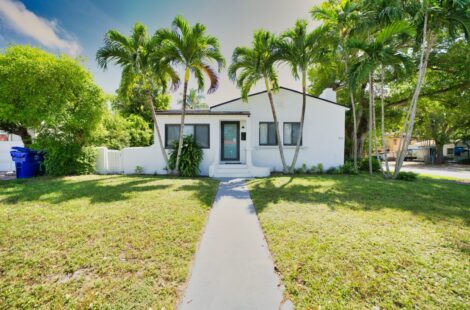
Maximizing Energy Efficiency with Low-E Windows and Doors
Presently, since the energy costs have started to grow, a lot of individuals simply look for methods to make better use of their homes. One of the most fascinating things one can invest in during building is probably replacement with Low-E windows and doors inside his or her house. Low-E (low-emissivity) was meant to enhance insulation and lower energy use within the house, hence being very smart for anyone who intends to optimize his or her home performance. The guide below explains in full how low-E windows and doors work, the benefits that they have with them, and how they will be able to help in reaching maximum energy efficiency in the home.
What are Low-E Windows and Doors?
Low-E Technology
Low-e windows doors are treated using a special coating that reflects infrared as well as ultraviolet light but allows visible light transmittance. In most cases, it is an application on the surface of the glass which acts as a kind of barrier regulating temperature indoors. This “low emissivity” coating slows down heat loss from your home by minimizing heat entry in hot weather while preventing escape in colder seasons.
How Low-E Coatings Work
A faint transparent coating of metal or metallic oxide, referred to as the Low-E coating, is used on the glass. This serves the purpose of reflecting heat and allowing natural light into the room at the same time. Some types of Low-E coatings can be applied on one side only while others may have double-coating for higher efficiency. In general, this results in improved insulation and energy efficiency making your residence cozier hence minimizing dependency on artificial heating and cooling systems.
Benefits of Low-E Windows and Doors
1. Increased Energy Efficiency: Low-E windows and doors are very efficient in enhancing energy efficiency. Because of reduced heat transfer, such products maintain a continuous indoor temperature, reducing stress on heating and cooling systems. This leads to lower energy consumption and reduced utility bills. According to a rough estimation by the U.S. Department of Energy, Low-E windows may help homeowners save up to 30% in energy costs.
2. Comfort: Low-E windows and doors ensure a comfortable living experience. These products maintain indoor temperatures constant, limiting drafts and blocking the loss of heat. Seldom do you find hot or cold spots within your house, making it an even more pleasant stay. The Low-E technology reduces sun glare further, comfortable enough to reside throughout the day in your home.
3. UV Protection: The Low-E coating on windows and doors blocks out a majority of the UV radiation. UV rays can cause fading and damage to furniture, flooring, and other elements inside the house. Low-E windows and doors reduce UV exposure inside the home and help protect your interior possessions from sun damage for longer years.
4. Reduced Condensation: Low-E windows and doors reduce Condensation on the surface of the glass. The coating allows the glass temperature to be closer to the interior environmental temperature, thereby reducing the possibility of Condensation on the glass surface. It improves visibility and helps prevent mold and mildew growth around windows and doors.
Low-E coating types include:
1. Hard-Coat Low-E: Hard-coat Low-E coatings are applied on the glass in the course of manufacturing. They are highly durable and provide very efficient thermal performance. Hard-coat Low-E windows work appropriately for extremely hot and bright sunny climates. This type of window provides superior insulation from heat and UV rays, which therefore means that a great deal of homeowners would prefer using them.
2. Soft-Coat Low-E: The soft-coat Low-E coatings are applied inside a vacuum chamber, making the coating layer much more fragile but finer on the glass. Soft-coat Low-E windows have better thermal performance and higher levels of UV protection compared to hard-coat coatings. They work best in cold climates where warmth should be maintained inside the house.
3. Low-E w/ Argon Gas: Similarly, Low-E windows can be combined with argon gas and inserted in between the glass panes. Argon is a very inert type of gas that offers better insulation by reducing heat transfer. This combination of Low-E coating and argon gas works wonders for energy efficiency to keep your home comfortable throughout the year.
Low-E Window Installation and Door Installation
1. Selecting the Right Product: Select low-E windows and doors based on climate, energy efficiency ratings, and specific home needs. Consider using a professional to determine the right type of Low-E coating and gas fill for your application. Make sure to ask for high energy performance ratings to ensure maximum efficiency.
2. Professional Installation: Proper installation is crucial to realizing all the possible benefits of Low-E windows and doors. Hire an experienced contractor who will install your new windows and doors appropriately. Correct installation avoids air leakages and ensures that the Low-E coatings and gas fills perform as they are supposed to.
3. Regular Maintenance: The following tips will help you maintain the best:
- Follow your Low-E windows and door.
- Lean glass surfaces using a mild detergent and by using a soft cloth that will not damage the Low-E coating.
Heck for any signs of damages or wear and address issues arising as soon as possible to maintain efficiencies.
Conclusion
Low-E windows and doors can provide many benefits to the homeowners while one could maximize the energy efficiency and comfort. In such a context, the transfer of heat would be reduced, UV ray blockage is facilitated, and Condensation is at a minimum. These reduce the energy bills and let people live more comfortably in their homes. Upgrade or install new Low-E windows and doors to experience the best in performance with savings that will be worth the investment.
Low-E windows and doors are improved now. Come for an upgrade today for a more energy-efficient, comfortable, protected home!





